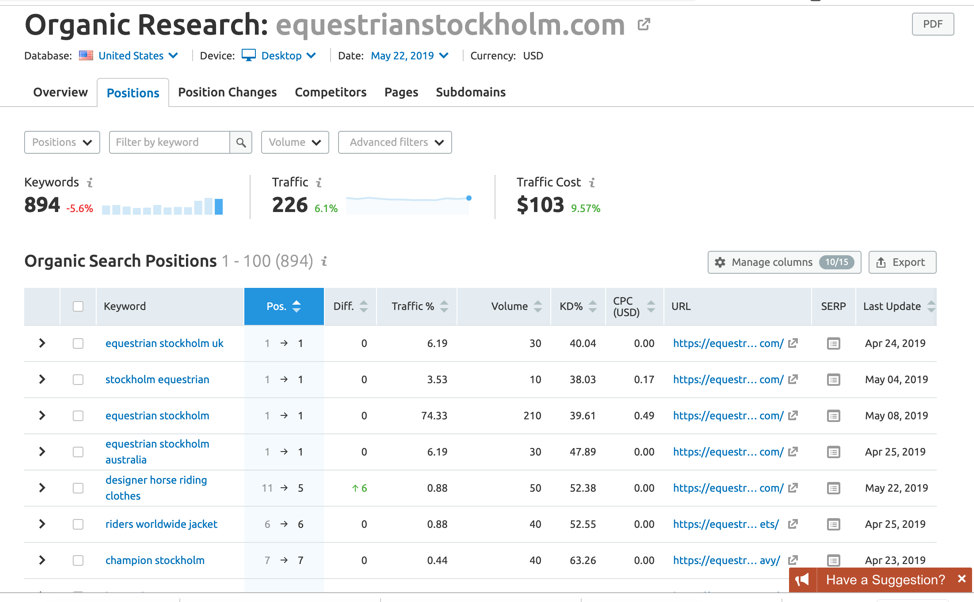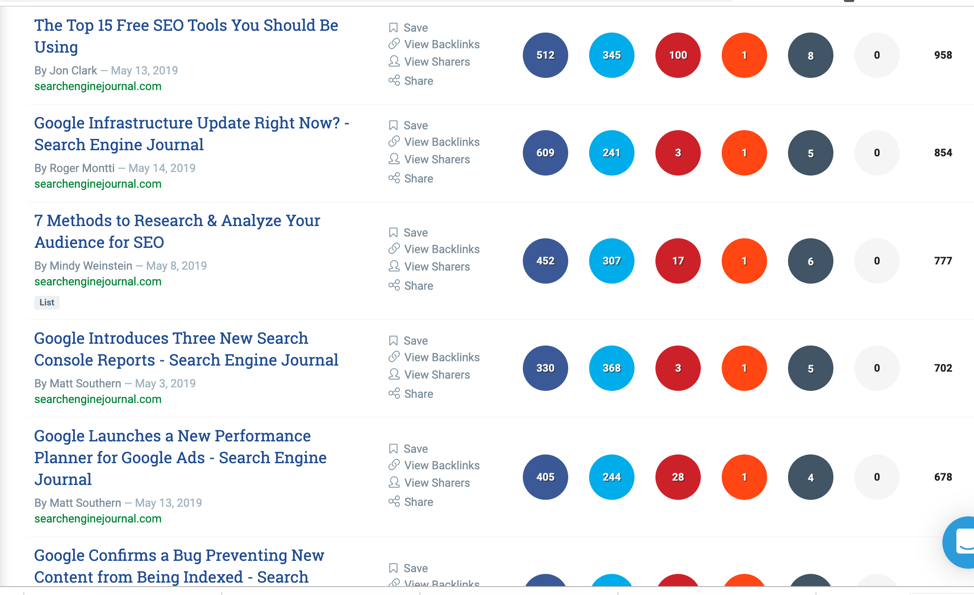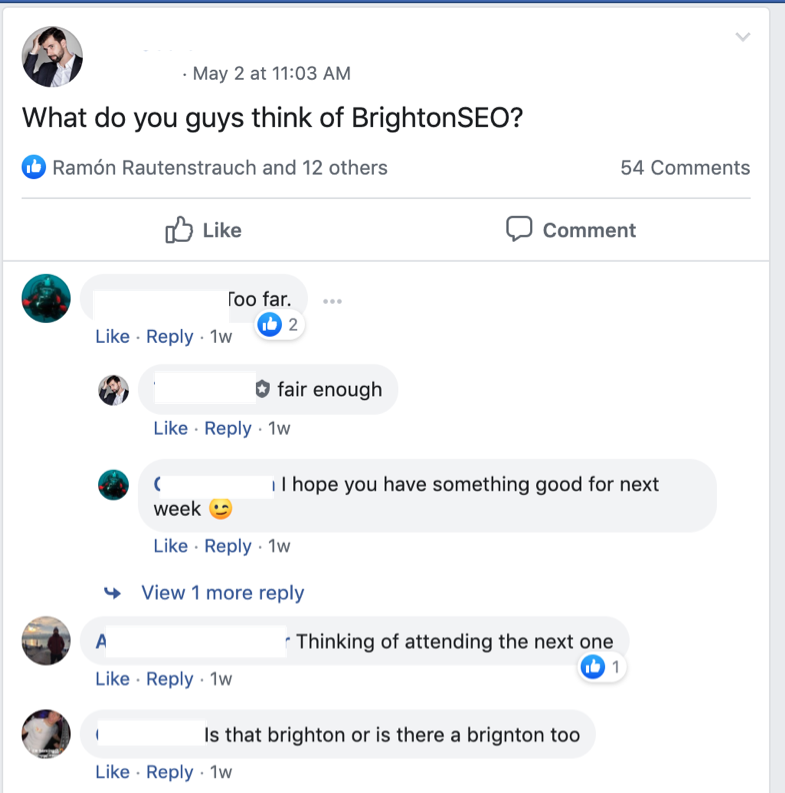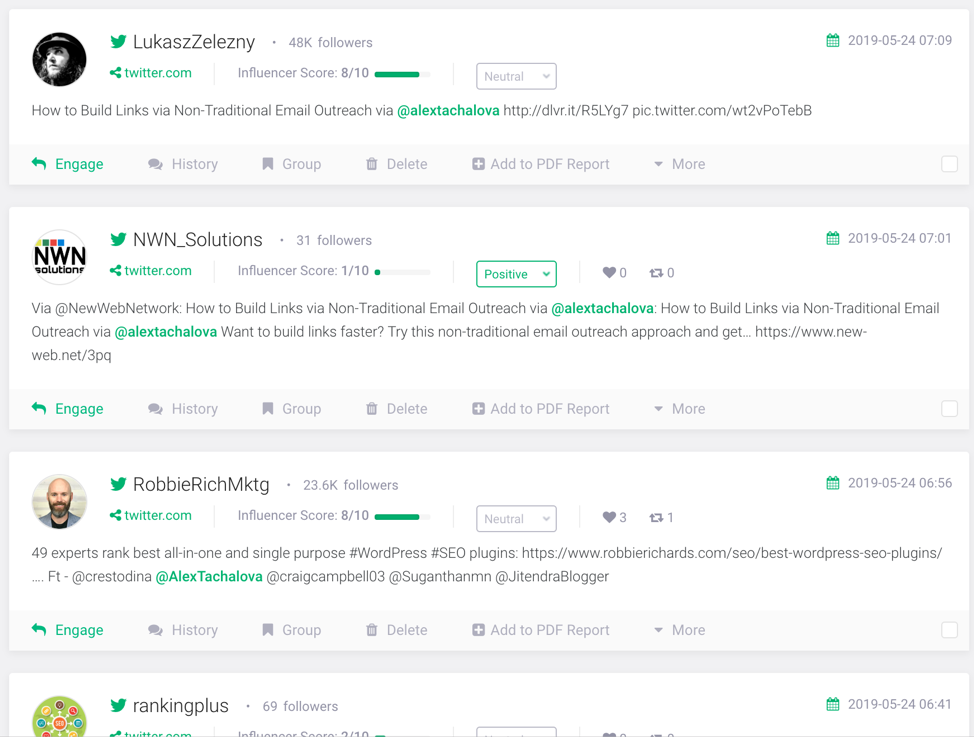Public Relations has a PR problem: 87% of PR executives claim that the term “public relations” has become too limited to describe what they do. At the same time, however, almost 50% of respondents also believe that public relations will be increasingly integrated with marketing processes within the next five years. That is exactly the trend I have been noticing lately. A good example is influencer marketing. Companies are willing to pay over $500,000 to appear on Kim Kardashian’s Instagram account. For a single post! In fact, social media has become an essential piece of the content marketing process rather than a standalone activity. It is clear that the future of digital PR is in cross-disciplinary integration across various digital channels.
So what does it mean for you? To stay ahead of the pack, digital PR specialists have to start expanding their current scope of skills by getting along with other channels of acquiring traffic. So, in today’s post, I am going to talk about the digital PR strategies that are still thriving and can help you become the #1 business in your niche.
Establishing relationships with influencers across your niche
A recent study by Influencer Marketing Hub revealed that 63% of the interviewed marketers are planning to increase their budget on influencer marketing within the next year. So, if building relationships with your industry influencers is not your top priority yet—you might want to reconsider.
Now... where do we start?
Create a list of terms that are related to your business.
For instance, if you’re selling equestrian goods then your terms should include some horse riding disciplines like dressage and jumping. Team up with your SEO people to figure out what kind of keywords they consider the most important.
Hint: I highly recommend checking your competitor’s keywords as well. There are some tools like Semrush that will allow you to search via any domain name and see by which search terms those sites are ranking in Google:

If you want to dig deeper and learn more about your competitors’ research then here’s an excellent guide.
Andy Crestodina, CoFounder/CMO - Orbit Media:“Influencer marketing is a mega-trend and it’s no surprise. Driving traffic from search and social isn’t getting easier. Clickthrough rates from SEO are falling. Social and email are more crowded and competitive than ever.
Organic influencer marketing is about connecting and collaborating with people who have already built the audience you want to reach.
I created a video that connects all the dots between influencer marketing and search engine rankings. But remember, the best outcome of influencer marketing is friendship.”
Once you have figured out your keywords, find the people that are constantly buzzing about your topic.
You have two options: one is to take the more time-consuming route and look up articles on relevant topics to see who the authors are. A hassle-free option is to use BuzzSumo to find your industry influencers using the keywords from your list. One of many advantages that BuzzSumo offers is that it allows you to export all the guest contributors of top-notch industry blogs. For example, a screenshot below shows you who is writing for the SEJ blog:

Round-ups with gurus in your field are also an excellent way to build your initial list. BuzzSumo can help you find the relevant ones to pitch in.
Fine, so you have your list of experts that you’d love to connect with. What’s next?
A lot of people rush into email-blasting a non-personalized template, trying to play a numbers game. Do NOT be like them. Take your time to get to know the people you are interested in. Start by following them on social media. Then, to make them aware of you and your brand, engage them in a conversation by leaving meaningful comments on their blogs.
To get your foot in the door, invite an influencer to share their content via your or your company’s social media channels. A catchy text and a custom-made image are all you need. So, once you’ve tested the waters, go ahead and send them a brief email. Your motive can be to ask for a quote you could use in your piece, or just say “hi,” and let them know that you’d love to collaborate and help them in any way you can. “The links you share in emails can also be a major pitfall when trying to reach influencers and journalists. It’s a known fact that generic short URLs (like tinyurl.com) are often marked as spam by email clients, so it’s important to use links that will ensure your emails get delivered.
Using a branded URL shortener gives you full control over the links you’re sharing by letting you use a custom domain- featuring your brand’s name. Putting your company’s stamp on your links not only builds trust and brand recognition, but can even increase click-through-rates and email deliverability.”
Davide De Guz - Founder of Rebrandly : "Branded links are great for monitoring the impact an influencer marketing campaign has on your conversions. By adding UTM parameters to the links your influencer shares, you can see exactly how much traffic an influencer is driving to your website and how many conversions are resulting from it. This will help you decipher if it was worth the investment"
If you want those experts to become your brand ambassadors, you have to keep them involved in your content marketing strategy. Collaborate with your content marketing team on how to make it happen.
As an idea, feature influencers in your webinars, podcasts, or blog posts. You automatically reach out to a broader audience since this content will also be consumed by the expert’s audience. Pitching influencers the right way may result in bringing on board up to 29M brand impressions. Not bad, huh?
Ryan Robinson, blogger and podcaster: “When I started my blog just a few years ago, I leveraged the tactic of first quoting and mentioning key business influencers like Richard Branson, Arianna Huffington, Robert Herjavec and more in my articles before even reaching out to them.
After my articles published, I’d then send a cold email that let them know about their feature on my blog—which helped me build more meaningful relationships since the conversation started from a place of already providing value (rather than immediately asking for something from a busy influencer).
Later on, after building rapport and establishing myself as a helpful resource to many of the business influencers I wanted to collaborate more with, I was able to involve them in more of my content initiatives like my ultimate business advice roundup. Many of these relationships continue on today as partnerships and have even transitioned into a few paid gigs.[”
The final insight I’ve learned by trial and error. As it turns out, “the bigger the better” rule doesn’t always work in digital marketing. Think about this: you get tons of visitors but only a tiny percent of them gets converted into clients. The same applies to influencers. It’s easy to stretch yourself too thin by trying to work with every single expert in your area. Instead, try this: come up with a list of 100 gurus with whom you share similar values and beliefs. This is your Dream 100. They should be in your focus. Get to know those influences and see how you can benefit each other.
Working with media outlets
Even though this strategy may apply to any brand, it does have some limitations. The biggest challenge you will face is having a newsworthy pitch.
Red Bull is a perfect example of making a sensation. The Red Bull Stratos project sponsored the first person to break the sound barrier during freefall. The live stream of the event racked up 8 million views—that’s 8 million exposures to the brand! Obviously, you don’t need to create another Red Bull Stratos project worth 330M pounds but it has to be something deserving journalists’ attention.
So what can you do to be seen? Pitch topics that perfectly align with the journalists’ editorial plans—this will guarantee you being featured in a media outlet. Of course, it is easier said than done. From my personal experience, topics that include analytics along with an engaging story are the first to be selected. For instance, people went crazy over the Kardashian salary calculator when they found out that it takes Kim 6 hours to earn the median UK salary. The story made international headlines, giving the clothing brand that came up with the calculator lots of exposure.
Now think creatively: what can you do to gain more attention for your business at the time of information overload? Check these insights from launching 100+ link building campaigns for some ideas.
“One of the most effective ways to create link-worthy content is to publish an original research study backed by a survey. Think about “The Sexiest Accent” or “The Most Admired US Woman” types of surveys. These spread like crazy and usually have great success rate with any kind of journalistic outreach. The good news is you don’t have to invest in your survey. You can set it up and collect answers for free: Here’s how” - Ann Smarty
If you are interested in local media outlets, personal stories of your company’s founders and employees are your best bet. Articles about failures and success stories that followed are also usually a big hit, which makes them an easy sell to journalists. Share something people can relate to and learn from. As an example, one of my most successful posts is about the biggest challenges of an agency that doesn’t work with local clients.
Hint: Not sure if your piece of content deserves to be pitched to media outlets? Validate it! Find a few journalists that are not so top-notch but have their own columns. Now, you can either hire them (if you need an answer right away) or spend some time building relationships. Once they become aware of you, send them a little gift (a free coupon to Starbucks or Amazon) and ask for a favor—to review your content idea and give some feedback.
The process of working with journalists is quite similar to working with influencer marketers, but has certain nuances:
- Emails have to be structured in a particular way since journalists receive hundreds of pitches per day and don’t have time for much googling. Make sure to send them your story in a press release format.
- Pitched content has to be exclusive—it should not have been featured anywhere before.
- Not to end up marked as junk mail, Prowly recommends sending emails on Thursdays around 2 pm local time. The worst days for emails are Mondays and Wednesdays, as they tend to be the busiest weekdays.
Unleashing the power of social listening
Social listening is a superpower if you know how to set it up right. It’s not rocket science to know that people are sharing what they like and dislike about brands on their social media pages.
Ross Simmonds, Entrepreneur & Digital Strategist with Foundation—a B2B Content Marketing & Intelligence Agency, shares his two cents:
“Every single week there are millions of posts shared on social media. Some of those conversations you will never uncover because they're behind private accounts. But a good portion of the posts shared on social media are actually public. This offers three key opportunities:
1) The opportunity to engage. Is someone talking about something relevant to your industry or brand? This is a chance for you to get involved in the conversation.
2) The opportunity to react. We've all seen brands get looped into some very popular pop-culture moments. But often times the brand will miss it! That's a shame. Brands need to always on just like their customers.
3) The opportunity to influence. Sometimes the conversation happening online isn't something you REALLY want online. But there it is. Here's the thing though: you can never control the conversation. But you can influence it. And that's what brands have the opportunity to do if they look for both the good and the bad and respond. ”
For instance, here’s a conversation on Facebook about one of the biggest digital marketing events here in Europe:

When your brand’s name appears on social media, it is your chance to react proactively and show your exceptional customer service. You might argue—it’s not PR, it’s customer service. This is true but only when those SMM shout-outs are sent privately. Once people are tweeting or sharing on Facebook—it’s your area of expertise.
However, don’t get obsessed with tracking every single mention. There’re plenty of SMM management tools that are ready to help you. Among my favorite is Brand24 that automatically marks the tone of each message your brand receives. Below is a screenshot of the results I got from Brand24 when I looked up my own mentions.

You can learn all about using social monitoring for PR from The Complete Social Media Listening Guide for Public Relations.
Turning your loyal clients into your brand’s fans
I always recommend using this strategy to get more brand mentions across various channels if on a shoestring budget.
The video gaming industry is an excellent example of turning customers into die-hard fans. However, the downside of any passionate fan is that they can also turn into a passionate hater in a heartbeat. For example, even the people that have never heard about Blizzard probably know that the brand is very unpopular among their used-to-be fans, as the company decided that revenue was more important than their current clients’ needs.
But with great risks come great rewards. The best thing about your loyal clients is that they already love you and there’s no need to invest in building relationships with them. Instead, they can become your free advertisement across various channels. Encourage them to share positive feedback about your brand on social media.
Aljaz Fajmut, the CEO of Nightwatch : “Here, at Nightwatch, we love to make our loyal customers smile and we still occasionally send them boxes of chocolate to make them feel appreciated and a part of our community. This was also something we've done with our first users when we were just starting out. It's relatively a small gesture that goes a long way.
Of course, this also goes without saying that if you want your customers to recommend you to their network, you have to have a great product first. And with this thought in mind, we've developed Nightwatch and promoted our brand to the point in which our users not only help us with the affiliate program but spread the word about our product without the incentive. ”
How?
Create a client-only online community. Always stress the exclusiveness of this community and use it to announce your industry news, major changes, etc. For example, David Markovich, founder and CEO of “Online Geniuses”, shares tons of useful ideas on how to get the best bang for your buck.
Another way is to organize community-based parties and meetups for your clients to meet each other in person and form a loyal and interconnected group.
Joe Escobedo, author of “Asian Growth Stories,” content and social advisor to Fortune 500 brands
“I host exclusive lunches every month for my clients and community. Through these meetups, we’re able to bring together marketers from different industries to brainstorm ideas for common challenges. This not only allows me to share valuable insights, it has also facilitated business deals and new relationships among the attendees.”
Warning: Don’t add each and every client to this community, only consider those who have purchased a certain number of services/products from you or have a solid presence on the web.
A nice perk of having a closed Facebook group is being able to see all the members’ birthdays so you can send them lovely presents from the company (it doesn’t need to be big—a handwritten card with some swag or freebies will do).
For example, at our event, we were giving away t-shirts to boost our SMM mentions.

Conclusion
Now that we have covered the four strategies, we can see that it all comes down to relationships. The key to PR is to focus on the relationships with your clients, powerful influencers, and even journalists. If you take the time to learn about their needs and concerns, your brand will gain loyal supporters. I consider it a win-win!

